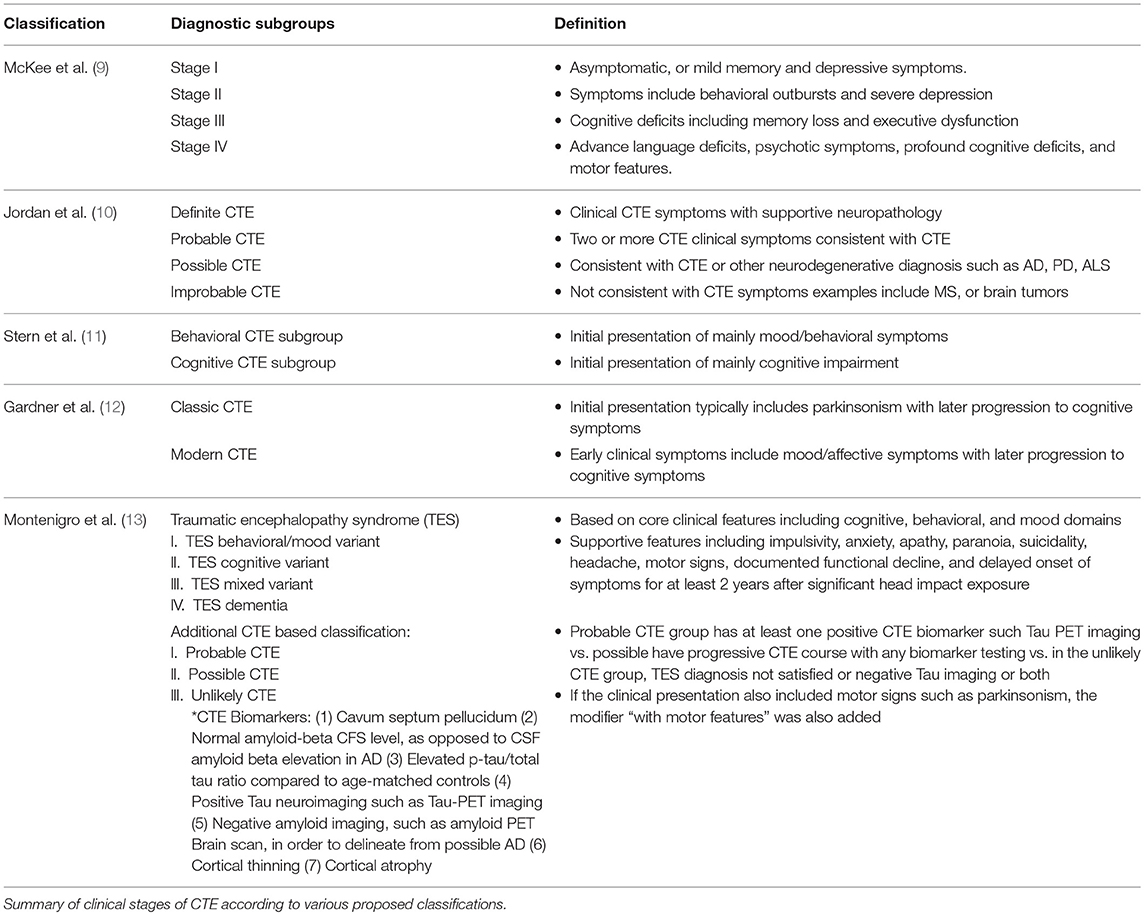Chronic Traumatic Encephalopathy, commonly abbreviated as CTE, is a progressive brain condition that has gained significant attention in recent years. It is primarily associated with repeated head injuries, including concussions and sub-concussive impacts. This article delves into the causes, symptoms, diagnosis, and care for individuals affected by this debilitating condition.

Understanding Chronic Traumatic Encephalopathy
Chronic Traumatic Encephalopathy is a neurodegenerative disease that affects the brain. It is most often found in individuals who have experienced repeated blows to the head, such as athletes involved in contact sports, military personnel exposed to blasts, and victims of physical abuse. The condition was first identified in boxers in the 1920s, but it has since been recognized in a broader range of populations.
Causes of Chronic Traumatic Encephalopathy
The primary cause of Chronic Traumatic Encephalopathy is repetitive trauma to the head. Unlike a single traumatic brain injury, which can heal over time, repeated injuries lead to cumulative damage. Here are some key factors contributing to its development:
- Contact Sports: Athletes participating in sports like football, hockey, boxing, and wrestling are at a higher risk due to frequent head collisions.
- Military Service: Soldiers exposed to explosions or other forms of head trauma during combat may develop the condition over time.
- Domestic Violence: Victims of repeated physical abuse involving head injuries are also susceptible.
- Falls and Accidents: Individuals who experience multiple falls or accidents resulting in head injuries may be at risk.
It is important to note that not everyone who experiences repeated head injuries will develop this condition. Researchers are still working to understand why some individuals are more vulnerable than others.
Symptoms of Chronic Traumatic Encephalopathy
The symptoms of Chronic Traumatic Encephalopathy often appear years or even decades after the initial head injuries. These symptoms can vary widely and tend to worsen over time. Common signs include:
- Cognitive Impairment: Difficulty with memory, attention, and decision-making.
- Mood Changes: Depression, anxiety, irritability, and emotional instability.
- Behavioral Issues: Aggression, impulsivity, and difficulty controlling emotions.
- Motor Symptoms: Problems with coordination, balance, and speech.
- Dementia: In advanced stages, individuals may experience severe cognitive decline similar to Alzheimer’s disease.
These symptoms often overlap with other neurological conditions, making it challenging to diagnose Chronic Traumatic Encephalopathy accurately.
Diagnosis of Chronic Traumatic Encephalopathy
Diagnosing Chronic Traumatic Encephalopathy is particularly challenging because it can only be confirmed through a post-mortem examination of the brain. However, researchers and medical professionals use various methods to identify potential cases during a person’s lifetime:
Medical History and Symptom Assessment
Doctors begin by taking a detailed medical history, focusing on any past head injuries and their frequency. They also evaluate the individual’s symptoms and how they have progressed over time.
Neurological Examinations
A comprehensive neurological exam assesses cognitive function, motor skills, and mood. This helps rule out other conditions with similar symptoms, such as Alzheimer’s disease or Parkinson’s disease.
Brain Imaging
Advanced imaging techniques, such as magnetic resonance imaging (MRI) and positron emission tomography (PET) scans, are used to detect abnormalities in the brain. While these tests cannot definitively diagnose the condition, they provide valuable insights into brain structure and function.
Biomarker Research
Researchers are actively exploring biomarkers that could help diagnose Chronic Traumatic Encephalopathy in living individuals. These biomarkers may include specific proteins or other substances found in the blood or cerebrospinal fluid.
Care and Management of Chronic Traumatic Encephalopathy
Currently, there is no cure for Chronic Traumatic Encephalopathy. However, several strategies can help manage symptoms and improve quality of life for affected individuals:
Lifestyle Modifications
Making lifestyle changes can help mitigate symptoms and slow the progression of the condition. These include:
- Healthy Diet: Consuming a balanced diet rich in antioxidants and omega-3 fatty acids may support brain health.
- Regular Exercise: Low-impact physical activity can improve mood and cognitive function.
- Avoiding Alcohol and Drugs: Substance abuse can exacerbate symptoms and worsen cognitive decline.
Medications
While no medications specifically target Chronic Traumatic Encephalopathy, certain drugs can help manage symptoms:
- Antidepressants: These can alleviate mood-related symptoms like depression and anxiety.
- Mood Stabilizers: Medications such as lithium may help control aggression and impulsivity.
- Cognitive Enhancers: Drugs used to treat Alzheimer’s disease may improve memory and cognitive function in some cases.
Therapies and Support
Various therapies can help individuals cope with the challenges of living with Chronic Traumatic Encephalopathy:
- Cognitive Behavioral Therapy (CBT): This form of therapy helps individuals manage mood and behavioral issues.
- Speech and Occupational Therapy: These therapies address communication difficulties and help maintain independence in daily activities.
- Support Groups: Connecting with others facing similar challenges can provide emotional support and practical advice.
Preventive Measures
Preventing further head injuries is crucial for individuals at risk of developing Chronic Traumatic Encephalopathy. This includes:
- Wearing Protective Gear: Helmets and other protective equipment should be used during high-risk activities.
- Adopting Safer Practices: Athletes and military personnel should follow guidelines to minimize head impacts.
- Seeking Immediate Medical Attention: Any head injury should be evaluated promptly to prevent complications.
Ongoing Research and Future Directions
Research into Chronic Traumatic Encephalopathy is ongoing, with scientists striving to better understand its causes, improve diagnostic methods, and develop effective treatments. Key areas of focus include:
- Genetic Factors: Investigating whether genetic predispositions influence susceptibility to the condition.
- Biomarker Discovery: Identifying reliable biomarkers for early detection in living individuals.
- Treatment Development: Exploring potential therapies to slow or halt the progression of the disease.
Increased awareness and funding for research are critical to advancing our understanding of this complex condition and improving outcomes for those affected.





